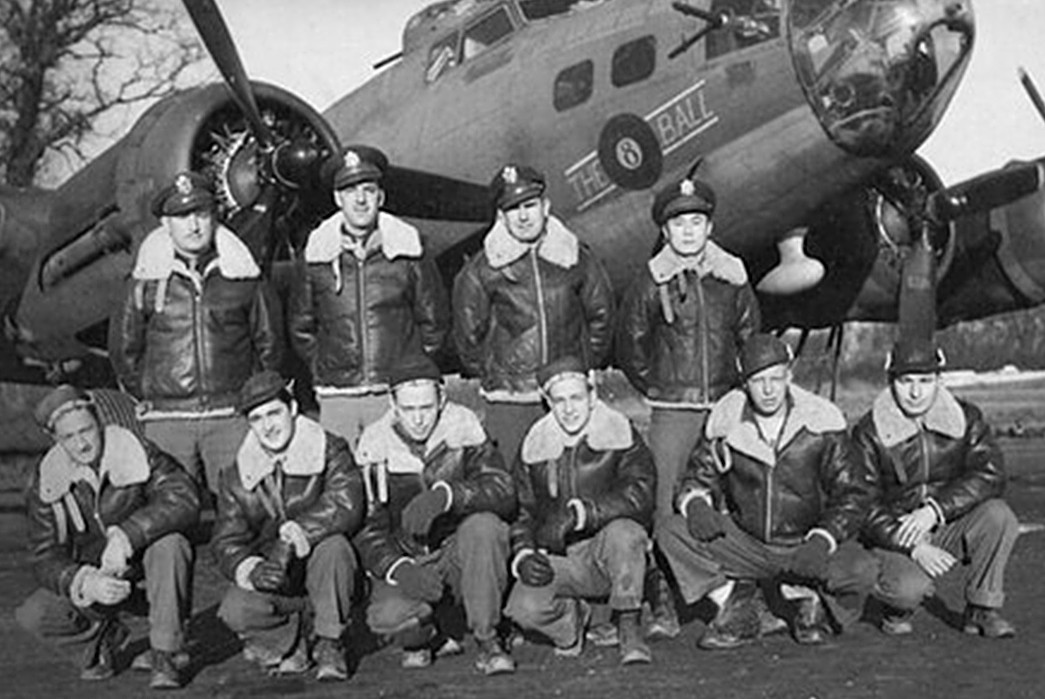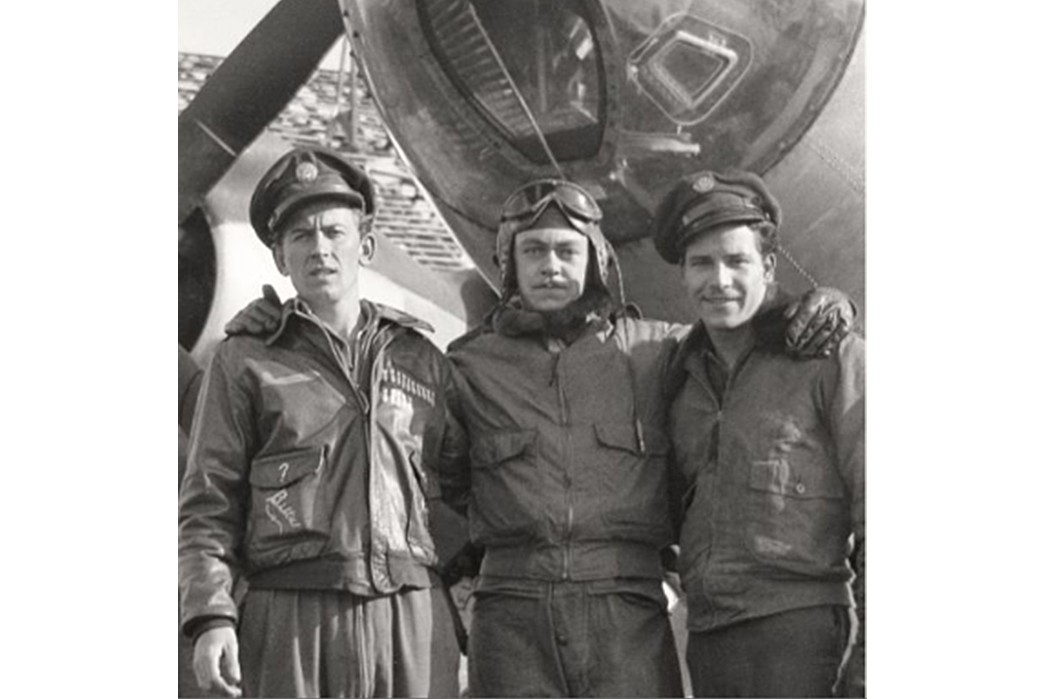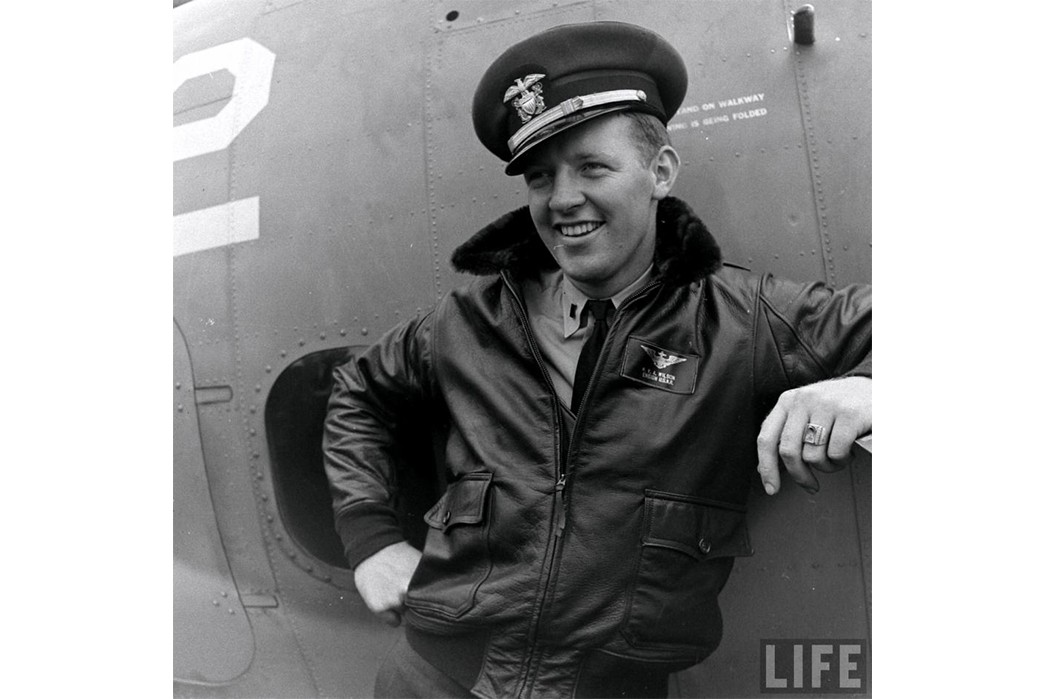- Heddels
- Posts
- May 8 - Why the USAF Brought back the A-2 Leather Jacket
May 8 - Why the USAF Brought back the A-2 Leather Jacket
Together with
Why the USAF Brought back the A-2 Leather Jacket
How a strange combination of Hollywood, deregulation of the airlines, and one persistent collector brought back an icon.
David Shuck

When you imagine an Air Force pilot, the first image that probably comes to mind is the dashing World War II-era captain in impossibly high-waisted khakis and a brown leather bomber jacket. You might be surprised to learn then that the first time the U.S. Air Force issued a leather jacket was in 1987.
You may call this a technicality, but the U.S. Air Force didn’t exist as a separate branch until 1947. Before then, it was a part of the U.S. Army Air Corps and then U.S. Army Air Forces, which issued its last leather in 1943.
The reason why the Air Force brought back a retro piece of equipment over 40 years later is a combination of Hollywood, one dedicated collector, and deregulation of the airlines.
A-2: Judgment Day
Army Air Corps airmen in their A-2 flight jackets.
The two-pocket brown jacket you probably have in your head is known as the A-2 flying jacket, and it was introduced by the U.S. Army Air Corps in 1931 as the successor to (surprise, surprise) the lambskin A-1 flying jacket.
The A-2 was made of horsehide, had a zipper closure, pointed collar, and a knit waist and cuffs.

Heavy B-3 sheepskin jackets.
Despite being colloquially known as a “bomber jacket”, the A-2 was mainly worn on the ground in World War II. Aeronautical technology had advanced to where airplanes could reach altitudes up to 30,000 feet but the cabins were still unpressurized and open to the elements.
Temperatures dipped to -40 degrees Fahrenheit at these heights, so crews donned heavy sheepskin jackets like the B-3 instead.

Two B-10 jackets (right) and an A-2 (left).
The A-2 was supposed to be succeeded by the AN-J series (Army Navy – Jacket), which was an attempt by the military to create a jacket that both Army Air Forces and US Navy pilots could wear.
The AN-J was a similarly styled leather jacket with a bi-swing back, but the new B-29 Superfortress bomber plane introduced in 1943 was pressurized and climate controlled, meaning one no longer required a heavy sheepskin suit to survive the flight.
The Army’s match to the B-29 was the cotton twill and alpaca-lined B-10 jacket, which was much cheaper to produce, weighed less, and could be worn both in and out of the plane. The Army Air Forces stopped issuing leather jackets altogether at the end of 1943 when they ran out of backstock.

The G-1 jacket with its signature mouton fur collar. Image via Life.
The U.S. Navy didn’t have the same altitude problem and, after a few modifications on the AN-J-3, issued the 55J14 in 1947. That jacket would be designated G-1 leather jacket in 1960 and the Navy hasn’t stopped making it yet. They still issue the G-1 to all flight status personnel over 60 years later.
The G-1 is the Top Gun jacket Tom Cruise made famous in 1986. The one in the movie was produced by the Paramount costume team and was later officially reproduced by Cockpit/Avirex, a company founded by Jeff and Jacky Clyman, who started as avid collectors and aficionados of flying jackets and became one of the first to reproduce old WWII jacket styles like the A-2 and B-3 in the 1970s.

They parlayed their success in making repro jackets to current spec outerwear contracts with the Air Force, NASA, and a variety of other agencies. And Jeff used every chance he had with the Air Force brass to advocate for a reissue of his favorite A-2.
By 1987, the Air Force had enough problems to say yes.
Deregulation Blues

Have you ever seen those old photos of what air travel was like back in the day? Chefs carving roast beef, seats that would make a La-z-boy blush, and an on-board piano—all of this in economy class.
This was when the airlines were still regulated by the government, meaning they designated what routes airlines could take, how many seats they could put on a plane, and what they could charge for them. If you could only sell half the space on a 747, why not put a piano lounge in it? As such, flying was a much more rarefied and expensive experience. In 1970, A round trip ticket from New York to London cost $550, which is about what it costs today despite roughly 10x inflation.
In 1978, Congress put an end to all that and deregulated the airlines. Suddenly, the market could have as many flights and carriers as it wanted, and between 1975 and 1985, the number of annual air passenger miles traveled nearly doubled as did the demand for pilots.
The average pay rate for an Air Force pilot in 1985 was about $30,000 while the median pay for commercial pilots was $85,000. What followed was a mass exodus from aerial combat to the friendly skies, right at the time the Reagan administration was trying to rebuild the Air Force to its Vietnam era strength.
The top brass was anxious about pilot shortages, but according to a former Air Force pilot, had a novel idea to fix it:
The leadership was growing concerned as the pilots themselves felt overworked, underpaid and under appreciated. The 9th Air Force Commander, Chuck Horner, came to all the fighter bases to hear our gripes and give us a pep talk.
Soon after, the Chief of Standards and Evaluation at the 9th Air Force thought he would play a practical joke on General Horner at a staff meeting. He walked in with wearing an A-2 leather flight jacket and told the general he had the pilot retention problem solved! Just issue the fighter pilots a new leather jacket.
He was kidding at the time, but General Horner thought it was a great idea and ran it up to the TAC Commander General Robert D. Russ, who also thought it was a great idea.
That’s right, to stop hemorrhaging pilots, boost morale, and compete with the Navy’s Top Gun sexiness, the Air Force revived the A-2 leather jacket over four decades after it was discontinued.
Remaking an Icon
Jeff Clyman’s persistence paid off. He recalls,
I finally contacted the appropriate division in the Air Force and coincidentally they were interested in the project and assigned a Lt. Colonel to spearhead the project with us. We submitted various types of leathers and the USAF actually adopted our commercial reproduction pattern as the first contract pattern and jacket using seal brown goatskin.
Cockpit / Avirex produced the first 200 jackets but they were underbid by another manufacturer for the full contract in 1988. Nonetheless, the jackets went out to the pilots, then to nearly everyone else in the Air Force—”navigators, loadmasters, crew chiefs, and even security police.”
The program was considered a success and continues to this day, but it also coincided with a significant bump in Aviation Continuation Pay that gave large cash bonuses to pilots and ground crews that stayed with the Air Force.
Jeff’s company finally won the contract when it came up for renewal in 1998 and, aside from a switch from goatskin to cowhide in the early 2000s (all materials have to be domestically sourced and the U.S. doesn’t have enough goats to keep up with demand), the Cockpit A-2 is still the standard for the Air Force.
If you would like that same cool leather jacket for yourself, Cockpit sells their USAF A-2 on their website, along with a period accurate repro of nearly every other jacket mentioned.
Like this? Read these:
What did you think of today's newsletter? |



